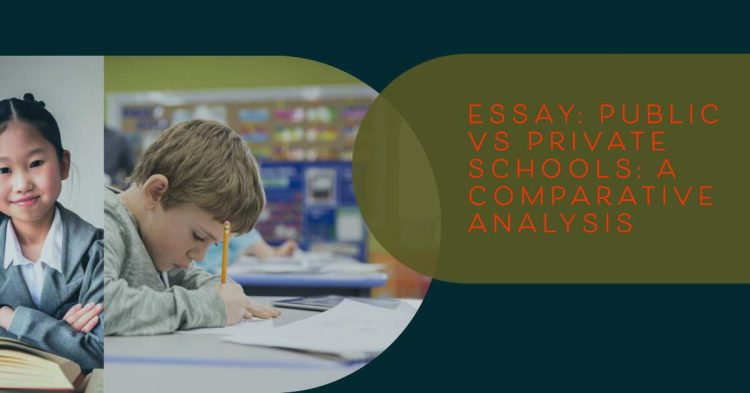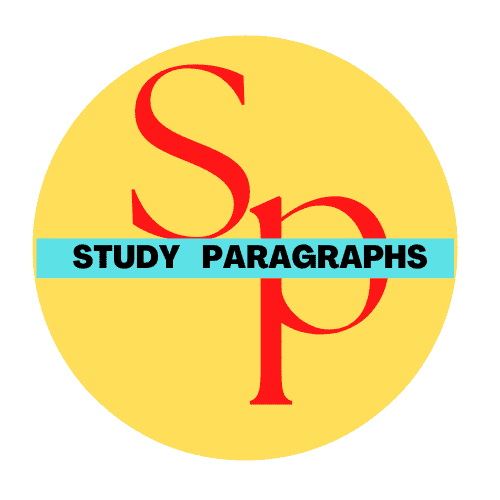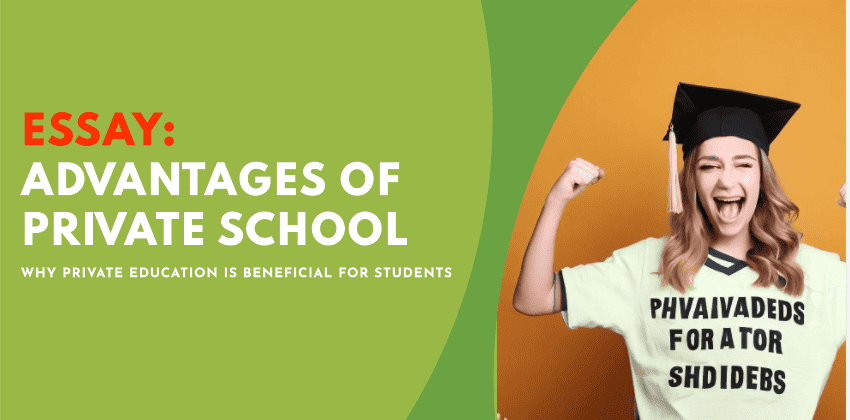Public School Vs Private School Essay | Advantages & Disadvantages
The discussion surrounding the choice between public and private schools is one that resonates with many families across Nigeria. Both types of institutions offer unique advantages and pose certain challenges. Ultimately, the choice often depends on personal values, specific needs, and the student’s individual circumstances.
Essay About Public vs Private Schools: A Comprehensive Comparison
Advantages of Public Schools
1. Accessibility
One of the primary advantages of public schools is their broad accessibility. Funded by state and federal governments, they provide education to all students, irrespective of their socio-economic status. This democratic perspective guarantees that education is not a luxury limited to a handful, but a basic entitlement available to everyone.
2. Diversity
Public schools usually attract a diverse student population, providing students with exposure to a variety of cultures, backgrounds, and perspectives. This diversity often fosters a richer learning experience, broadening a student’s worldview and encouraging empathy and inclusivity.
3. Extracurricular Activities
Public schools frequently take pride in offering an extensive selection of extracurricular pursuits, encompassing everything from athletic teams and societies to arts initiatives. These activities offer students an avenue for personal growth and development beyond the academic sphere, promoting physical, emotional, and social wellbeing.
4. Special Education Services
A crucial advantage of public schools is their obligation to provide special education services to students with disabilities. This ensures inclusive education, promoting equal opportunities for all learners, regardless of their abilities.
Advantages of Private Schools
1. Smaller Class Sizes
Private schools typically have smaller class sizes, offering students more individualized attention and personalized instruction. This can be particularly beneficial for students who need additional support or those who thrive in a more focused learning environment.
2. Resources and Support
Private schools generally have more resources and support systems in place for students, families, and teachers. This includes state-of-the-art facilities, well-stocked libraries, dedicated pastoral care, and robust parent-teacher associations.
3. Academic Reputation
Many private schools have built a reputation for their high academic standards and rigorous curriculum. Often aligned with international standards, these schools may offer a more challenging educational experience, preparing students for higher education and competitive career paths.
4. Specialized Programs
Private schools also offer a variety of specialized programs, such as arts-focused education, military training, or single-sex schooling. These specialized programs offer tailored educational experiences catering to a student’s specific interests or needs.
Disadvantages of Public Schools
1. Overcrowding
One of the major disadvantages of public schools is overcrowding, which often results from a lack of funding or resources. This often results in an increase in class size and a decrease in personalized instruction for students.
2. Limited Resources
Public schools, particularly in underserved areas, may lack the necessary resources to provide a high-quality education. This includes outdated textbooks, inadequate technological infrastructure, and underfunded extracurricular programs.
3. Standardized Testing Focus
There’s a significant emphasis on standardized testing within public schools, which can sometimes overshadow the broader educational experience. This focus may limit a student’s ability to explore subjects in depth and hinder the development of critical thinking skills.
Disadvantages of Private Schools
1. High Cost
The most obvious disadvantage of private schools is the high cost of tuition, which can exclude students from low or middle-income families. The financial burden can be further exacerbated by additional costs for uniforms, textbooks, extracurricular activities, and school trips.
2. Less Diversity
Private schools often lack the socio-economic, cultural, and racial diversity found in public schools. This can limit students’ exposure to different perspectives and experiences, potentially impacting their personal development and worldview.
3. Selective Admission Policies
Private schools often have selective admission policies, which can lead to a competitive and pressurized environment. This may not be conducive to all learning styles and can cause stress among students.
Conclusion
The debate between public and private schooling is intricate, with both types of schools providing distinct advantages. Indeed, the quality of education can vary significantly within both realms, influenced by factors like the specific school, the quality of teachers, and available resources. Ultimately, the choice between a public and private school should hinge on the student’s individual needs and the family’s values and circumstances. Each type of school offers unique learning environments and opportunities, and the decision should be made with careful consideration. Education, after all, is about nurturing a child’s potential and guiding them toward personal and academic success.
Public Schools Are Better Than Private Schools Argumentative Essay
Public schools, often criticized and contrasted to their private counterparts, possess several distinct advantages that are commonly overlooked. These advantages contribute significantly to the holistic development of a student, making the argument that public schools are better than private schools a credible one.
Firstly, the diversity in public schools is unparalleled, ensuring students are exposed to a multitude of cultures, social classes, and perspectives. In such a setting, students develop a robust understanding of the world, fostering empathy and tolerance. This rich cultural exchange is often missing in private schools, which tend to attract a more homogeneous student population.
Furthermore, public schools are governed by a standard curriculum decided by education boards, ensuring transparency and uniformity in the quality of education. This ensures that every student, irrespective of their geographical location or socio-economic status, receives an equivalent education. On the other hand, private schools are not subject to the same level of scrutiny and may deviate from the prescribed curriculum, leading to inconsistencies in the quality of education.
Public schools also provide a real-world learning environment where students learn to navigate challenges without the protective bubble often found in private institutions. This helps students develop resilience and adaptability, essential skills for their future endeavors.
Additionally, public schools offer more teacher stability compared to private schools. Teachers in public schools are often unionized and enjoy secure employment, leading to a lower turnover rate. This stability ensures continuity in a student’s learning process, while also fostering a strong student-teacher bond.
Lastly, the wide range of extracurricular activities in public schools provides students with numerous opportunities to discover and nurture their talents outside the classroom. While private schools also offer extracurricular activities, they often come with additional costs, which may deter some families.
In conclusion, while both public and private schools have their merits, the argument that public schools are better than private schools is valid. Public schools offer diverse learning environments, a standard curriculum, a realistic representation of the world, teacher stability, and a plethora of extracurricular activities. These attributes contribute to a well-rounded education, equipping students with the necessary skills to thrive in the real world.

Hello! Welcome to my Blog StudyParagraphs.co. My name is Angelina. I am a college professor. I love reading writing for kids students. This blog is full with valuable knowledge for all class students. Thank you for reading my articles.



